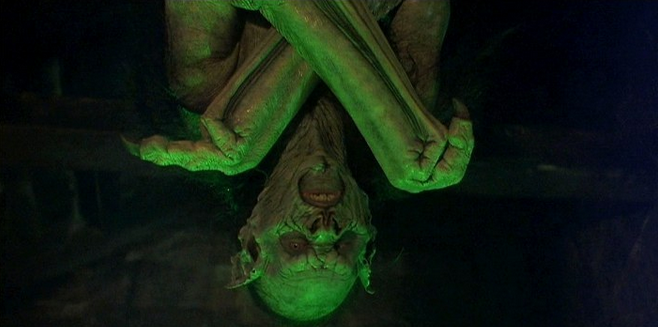Written By: Brandon Engel
Dracula was published in 1897 and has since inspired numerous incarnations over all media formats, the most recent being last year’s Dracula Untold. Movies, shows, comic books and more have all had some version of Bram Stoker’s tale told and retold. Of all the movies, which there have been many, it is Francis Ford Coppola’s Bram Stoker’s Dracula, which is being rerun this month on the El Rey network (check here for availability) that really stays true to the author’s original story and spirit. Let’s take a look at the two and see how they match up.
When you think about a story, the way it is told is very important. Both Stoker and Coppola’s visions are presented similarly. The novel featured diary entries, newspaper clippings and other random notes from various characters. Through this random assortment of facts and notes, you are presented with the story of Count Dracula and his travels to America.
Screenwriter James V. Hart decided to keep this multiple point of view in his telling of the classic tale. We are presented a story of Count Dracula and his lost love through multiple viewpoints. Everyone has their own way of viewing the story, and we are given a glimpse into that view. In doing this, Coppola’s Dracula manages to switch protagonists throughout the film. While you know Count Dracula is the ‘bad guy,’ you are more drawn to him through his perception of the story. It is this mastery of storytelling that really blends the two versions together.
Coppola and Hart are both fans of the original work and have studied both Dracula and Stoker extensively. Many people believe Stoker would have produced a more R-rated version of Dracula had his society been more open to it, but the book was still able to shock Victorian society at the time of it’s release. James Hart added in a romance between the Count and Mina that was only hinted at in the novel. This well-done addition lends itself to more sexual tones throughout the film, which was another underlying factor in the novel.
This addition does cause one major difference between the novel and film. Stoker never told us exactly how or when Dracula became an undead monster, but hinted at him coming home from the war already turned. To add in his romantic tale of a lost love for his Count, he has Dracula denouncing God and religion after returning home from the war. Upon hearing false news of Dracula’s death, his fiancee commits suicide. As she is damned to hell, the Count renounces faith and essentially turns himself into the monster.
All of the artists shared a love for history. Stoker’s original manuscript has notes scribbled about major historical figures. Recently, it has been discovered that his Count was not based solely off Vlad the Impaler, but in fact also off the Elizabeth Bathory. This Hungarian Countess was said to have murdered a large number of young women. It’s reported that she would then bathe in their blood, believing this was the key to eternal youth.
Hart and Coppola use history as a central theme in their story, but they relate it differently. To them, the birth and growth of the cinema and technology is tied to the desires and needs of the characters. This is most vident in an early scene featuring the Count and Mina at a cinematheque. While she is allowing herself to be seduced by this monster, the on-screen film plays shots of intense fright or shock and pulls the viewer into her desire.
Coppola’s Dracula may not be a scene-for-scene remake of the classic Stoker novel, but it is one of the closest. It is also the only one that brings true spirit to an old monster and continues Stoker’s original storytelling style. Some wrongfully dismiss the film as too far off or too over-the-top, but in actuality, is it simply telling a great story the way a master would have wanted it told.
—
Writer Brandon Engel has made a name for himself submitting film-related essays to various websites, and is a frequent contributor to PopcornMonster.com. For more of his work you can visit the following links:
My Bloody Valentine – 5 Horror Films for Heartless Romantics (via PopcornMonster.com)
The Blackest of Fridays: Top 5 Yuletide Viewing Oddities (via PopcornMonster.com)
John Carpenter: A Master of the Macabre (via PopcornMonster.com)
EC Comics and the World of Stephen King
Biting Critique: Vampire Lore as a Vehicle for Social Commentary
How Frank Miller Saved the Batman
Top 5 Films Inspired by Ed Gein










